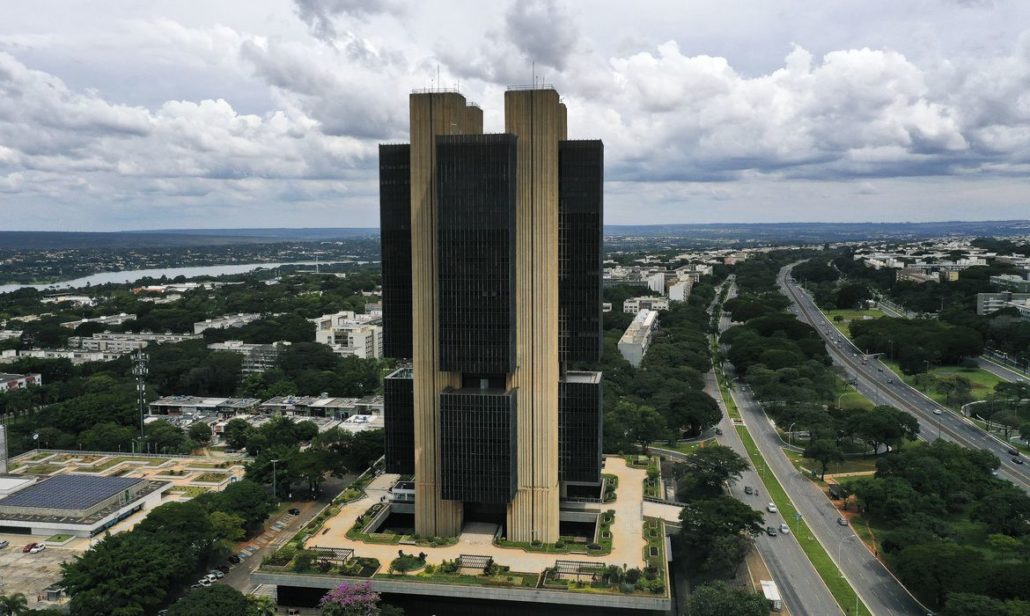In private meetings with investors in Washington, policymakers emphasized commitment to goals
10/17/2022

With the monetary tightening cycle over and the Selic benchmark interest rate at 13.75%, the Central Bank tried to demonstrate a vigilant attitude with the conduct of monetary policy in private meetings between directors and investors in Washington, in the scope of the meetings of the International Monetary Fund (IMF) and the World Bank.
Market participants heard by Valor on condition of anonymity emphasize the cautious tone of the Brazilian monetary authority and the emphasis given to the willingness to bring inflation back to the target.
Roberto Campos Neto, Central Bank’s president, took part in two meetings closed to the press on Friday and tried to reinforce his commitment to make inflation converge back to the targets. In one of the meetings, he reportedly said twice that he wanted to convey the message of serious commitment to the target, besides being concerned, in particular, with the dynamics of services inflation.
Mr. Campos Neto’s statements come in the wake of movements in the interest rate market that point to the possibility of the Selic rate cuts cycle starting as early as March 2023. He also stated, in one of the meetings, that the Central Bank’s job is to bring inflation back to the target and that the monetary authority will do whatever is necessary for this to happen.
Mr. Campos Neto was even questioned in one of the events about the behavior of inflation expectations and about when the cycle of Selic cuts might start. And, when analyzing the market’s behavior, the president of the Central Bank stated that part of the expectations of interest rate cuts embedded in the curve are more related to technical positioning and the probabilities of the scenario ahead.
Thus, according to one of the participants, Campos pointed out that the yield curve does not necessarily place reductions in the Selic faster than the Focus.
Thus, according to one of the participants, Mr. Campos Neto pointed out that the yield curve does not necessarily place cuts in the Selic rate faster than Focus, Central Bank’s weekly survey with economists.
In the Focus published last week, the median expectation of market economists is that the cycle of Selic cuts will start in June 2023, when the relevant horizon for the conduct of monetary policy will already be fully in 2024. A market professional present at one of the meetings even pointed out the perception that the Focus scenario, with the start of the easing cycle in June, still seems to be the most adequate for the Central Bank, at least for the moment.
Mr. Campos Neto was also questioned about the Brazilian fiscal situation and, in the perception of market participants, adopted a slightly more optimistic tone with the public accounts, although he emphasized the uncertainty in the scenario. “He noted that the data are coming in very good and better than expected, but also said that there is a degree of uncertainty in the future,” said one of those present.
This same source observes that Mr. Campos Neto, in his presentation, compared fiscal measures that have been implemented to contain the surge in energy commodity prices and noted that the measures adopted in Brazil are below the actions of other countries. “This set a tone of less concern about fiscal policy. It seems that the caution in this area is more in the long term, in the fiscal framework,” said the source.
Also present in Washington, Fernanda Guardado, Central Bank’s director of international affairs and corporate risk management, took part in a private meeting with investors, in which she used a more cautious tone when talking about the fiscal uncertainties ahead.
Ms. Guardado also maintained a more concerned tone when speaking about fighting inflationary pressures. According to market players, she was attentive to the existing uncertainties in the labor market and the degree of economic slack. A person who was present at the meeting stated that Ms. Guardado was in a more cautious position in relation to unobservable factors, such as the output gap (a measure of the economy’s slack), given that there were significant revisions in the economic scenario, which started to show a more closed gap.
In the September meeting of the Monetary Policy Committee (Copom), Ms. Guardado was one of the dissenting votes, defending an additional 25 basis points increase in the Selic, to 14%. The majority of the committee, however, voted to maintain the key interest rate at 13.75% at the meeting.
The only event open to the press in Washington with the presence of Roberto Campos Neto took place on Saturday, at a Group of 30 (G30) seminar. During his participation, he observed that the domestic interest market has begun to price the beginning of a cycle of Selic cuts in March 2023 and stated that this could mean “that the markets understand that we have done our job”.
Mr. Campos Neto also pointed out that Brazil has had three consecutive months of deflation. “A lot of that was because of government measures, so we don’t think it’s a special reason to celebrate. But the dynamic is improving,” he stated in the opening of his panel at the event.
*By Victor Rezende — São Paulo
Source: Valor International
